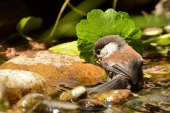Hi,
I'm in Georgia, north middle, because that is important info, the piedmont region. I struggle with gardening in general here. I live on severely eroded cecil sandy loam, but in places it's just super cement hard clay. Like it's been kiln fired. So I've made raised up beds. I
compost, I add manure. I don't want to buy bags of lime and stuff, if possible. My current garden location does not get much morning sun but is full sin from 10-11am until 8pm in summer.
I currently run drip irrigation and an occilating sprinkler from my well (I don't like doing this). it doesn't seem to matter how much I water, it still gets dried out. And the field grass is so voracious! my garden spot is all grass again. It's the tall johnson grass type.
The other thing is the bugs that come in droves from some where. Stink bugs, some squash bug looking this with leaf legs, squash bugs, pickle worms, squash vine borers, tomato horn worms, and moles. There are so many I can't manage them organically, so I just leave them to it. I didn't get any tomatoes this year. It just really takes any enjoyment out of it.
My garden is set up in rows, and isn't really permaculture. I'm just now learning about permaculture.
Other issues here are invasive plants like privet, bradford pears, and kudzu. I particularly struggle with Bradford pears, they sprout back from topped sprouts and root systems. You can cut down a tree, treat the stump and they will sprout from the root system. If you try cutting down small sprouts or saplings they come back even more aggressively and thornier than ever. It's the 2" thorns that are what makes this difficult to deal with. Thank you USDA for this tree. But will they come clean up the mess it's made? No.
Anyway, how do you permie in GA? I've revised my goals from dreaming of growing enough to sell, to just wanting healthy fresh food for my family.

 1
1
























































